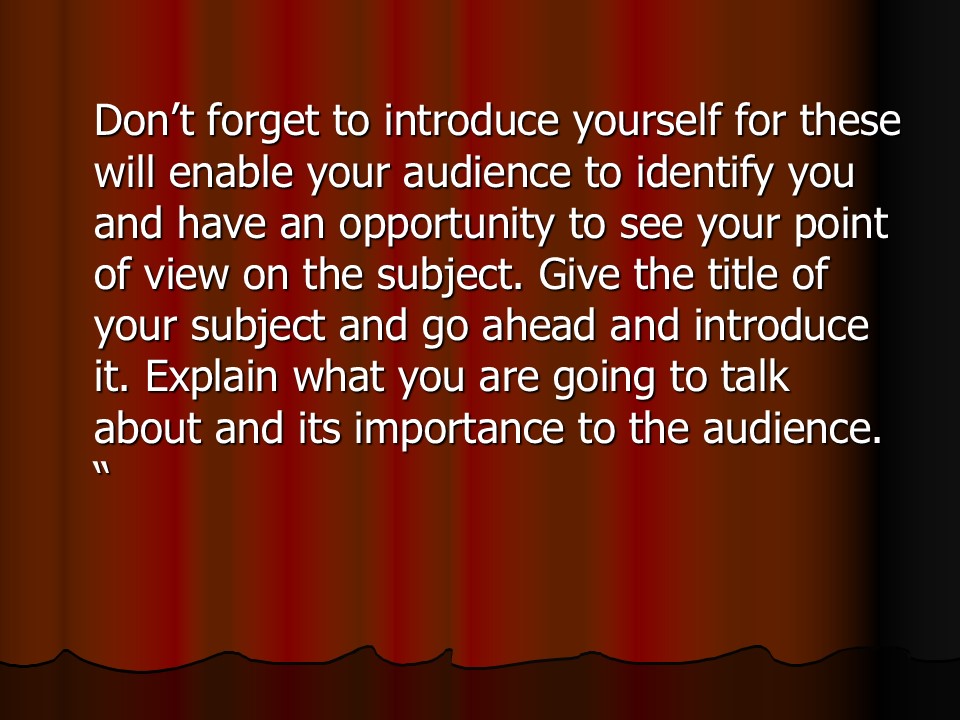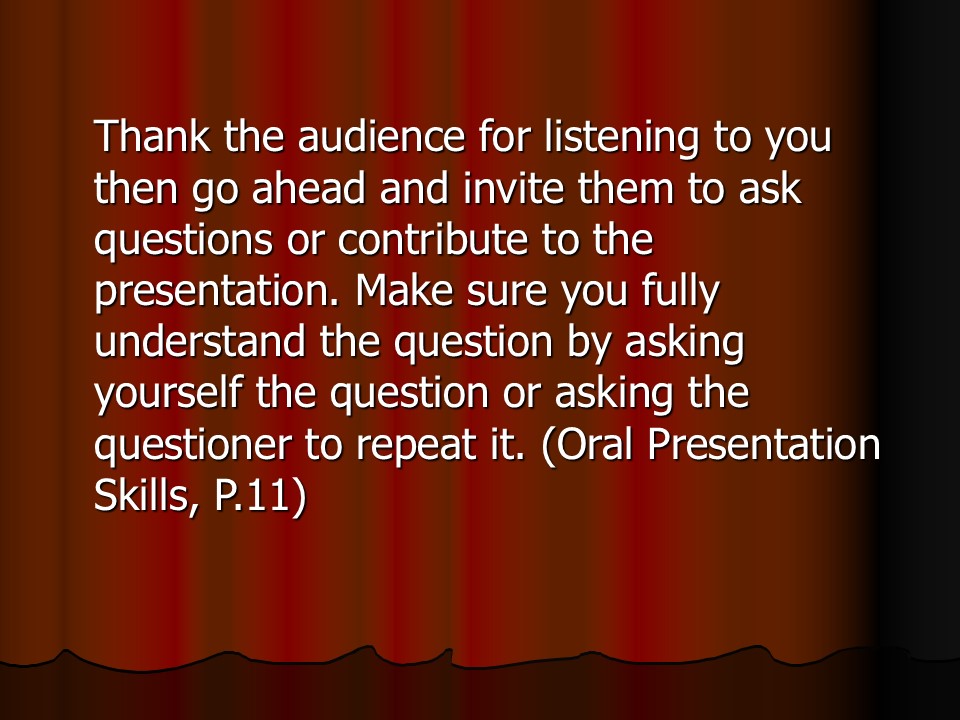Oral presentation entails communicating with an audience or other people at regular intervals to convince them of the quality of your work. Oral communication skills shape the course of any project (Oral Presentations, P. 1). The ability to make a good presentation is the key to success to many people through clarity of oral presentation and good interpersonal skills (Oral Communication, Para. 4).

There are guidelines in oral presentation as it is in documents, graphs and paragraphs. The structure and delivery of oral presentations is very important. You should ask yourself questions to guide you on how to prepare and plan your presentation.

Ask yourself questions such as; what is the aim of the presentation, which title are you going to talk about, who will be your audience, what are the main points are you supposed to put across and what are your expectations from the audience at the end of your presentation (Oral Presentation Skills, P. 3).

A well structured oral presentation makes it easier for the listeners to follow. There are three levels or parts to a typical presentation; the introduction, body and conclusion. Consider who your audience is, focus on the time you have to use, organize your speech in sections and practice instead of memorizing.

Some of the technical approaches of making a good presentation are; how do you prepare for your speech, how to present your speech and how to support your speech by using visual illustrations (Engineering communication Center, P. 1).

The introduction enables you to create a rapport with your audience and get their full attention on your presentation. You can use some statements to make the audience not to shift their attention. Make them want to listen and feel relaxed. Ask them questions to get the audience involved in your talk. Give real life illustrations.

Don’t forget to introduce yourself for these will enable your audience to identify you and have an opportunity to see your point of view on the subject. Give the title of your subject and go ahead and introduce it. Explain what you are going to talk about and its importance to the audience. “ it is useful to give the listeners some idea on how long you will speak so as to maintain their attention better” (Oral Presentation Skills, P. 6). Try to determine their attitude and knowledge by posing a question.


Have a specific and general purpose for your presentation. Tell your audience the objectives of the presentation and then the outline. Keep your outline simple to a few points. Let the audience know the time to ask their questions. Make a smooth transition from the introduction part to the body of your presentation.

Efficient communication is made by good presentations. Personality, humor and enthusiasm make an excellent talk. The body of your presentation will hold the content which supports the purpose and you should not forget to make use of examples to illustrate and develop your ideas. Rephrasing and summaries make the presentation clear and more understandable to your listeners.

Emphasize your points and refer to previous statements as well as what you will say thereafter. Organize your ideas sequentially using the same grammatical form headings. Make sure the audience focuses their attention to you thought the speech. Let the listeners know when you have finished talking on a point and introduce them to the next item by use of expressions. Avoid direct reading while you are presenting (Oral Presentation Skills, P.10)

As you end your presentation your listeners should not be caught in surprise. Finish by giving the summary of what you tried to put across in your presentation, how you did it and then give a conclusion. Your summary should focus on the main points only to make your audience remember them clearly.

Thank the audience for listening to you then go ahead and invite them to ask questions or contribute to the presentation. Make sure you fully understand the question by asking yourself the question or asking the questioner to repeat it. (Oral Presentation Skills, P.11).

References
Murray, L. (n.d). Learning & Teaching Development Unit, Brunel University. Web.
(n.d). Engineering Communication Center at the University of Toronto. Web.
(n.d). Oral Presentation Best Practices e-Book Downloads. Web.